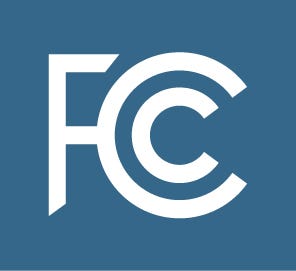The Wizard of Oz and Bill
There is a big distinction between Bill Ake and the Wizard of Oz, and let's hope it stays that way. It may not. Dorothy and Toto discovered that the Wizard
November 1, 2001
There is a big distinction between Bill Ake and the Wizard of Oz, and let’s hope it stays that way. It may not.
Dorothy and Toto discovered that the Wizard was a blowhard who was pulling levers and making much useless noise without any significance. Bill Ake, W8PRH, a Fairfield, OH, amateur radio operator, also has levers (actually multiple, linked radio stations), but his noise is of great significance to two-way mobile-equipped travelers in the states of Indiana, Ohio and Kentucky.
It is known as the “Mighty 190” operating on 145.190MHz — simply a system to allow automobile travelers in those states (traveling salesmen, skilled laborers and truckers) to communicate with each other from their vehicles as if all were in the same room instead of being scattered across the map of the Midwest.
The “Yellow Brick Road” in Bill’s kingdom (where all this takes place) spans the areas crossed by three interstates (I-75 and I-71 in Ohio and Kentucky plus half of I-74 in Indiana).
From a single transmitting tower in northwest Cincinnati, Bill’s system links 11 other transmitting and 44 receiving stations, dotted throughout the three states, to make it happen. The entire system is operating on amateur radio frequencies, and one needs a ham radio license to participate (but nothing but a receiver is needed to listen in on 2m frequencies).
Simply put, a Mighty 190 participant crossing I-480 near Cleveland-Hopkins airport can discuss the weather (or traffic, or politics or the Indians) with a similar equipped mobile traveler in Lexington, KY. Need power? No, 10W to 15W will do. Need a huge antenna? No, not for either vehicle.
First, of course, this system is no ordinary mobile communications repeater system — a fact noted even in the national magazine for amateur radio, QST, in April 1996. The “Fairfield Wide-Area System” (its official name) uses links, some with microwave technology, located in numerous volunteer and commercial tower locations, to create the largest multilink repeater system in the United States. Similar systems exist in San Diego County in California, the Washington — Baltimore corridor in the nation’s capital, Long Island, NY, and between Los Angeles and San Francisco. None of these systems have anywhere near the complexity or infrastructure of Bill’s “Mighty 190.”
Much of the equipment is donated commercial equipment, mainly General Electric Mastr II or Motorola Micor-Motrac mobile and base station units returned to the amateur frequencies in the 2m band. These top-notch electronic radios make the system easy to maintain, so it has little or no downtime. (Spare parts are more available for commercial-grade units than for amateur-only radios.) This is extraordinary, considering the size of the system, the number of working locations and considering that it’s staffed by full-time volunteers. Operations are also made possible by thousands of hours of donated time by numerous hams for maintenance and monitoring.
Now, what’s the problem?
The system grew from the early 1980s without either a permanent financial system or a regular system for acquiring spare parts and new repeater stations. The chief sponsor, the Fairfield Amateur Radio Association, does not have a dues system and does not want to start one.
Since 1982, the system has existed exclusively on voluntary contributions, and everyone wishes this arrangement to continue. In the past, many voluntary contributions came from ham radio events such as the famous Dayton Hamvention. At one point last year, the system had but $400 in the bank when normal monthly expenses were more than $1,350 in utility, maintenance and insurance costs. That’s quite a squeeze.
An additional, and even more troublesome, problem is obtaining additional replacement transceivers and spare parts. As the system gets older, replacement units are needed. Remember that all equipment now in service consists of the reused and returned commercial units Bill first obtained.
Therefore, the call is out for those with transceivers and spare parts (for example, parts for GE Mastr II radios, those that operate in the 450MHz range). Please contact FARA, at P. O. Box 40473, Cincinnati, OH 45240. As always, such donations are tax deductible.
Remember, the big distinction between Bill Ake, W8PRH, and the Wizard of Oz is that Bill’s system works.
Phillips, K8QOE, a federally licensed amateur radio operator for 42 years, is the elected Section Manager of Ohio for the American Radio Relay League. He lives in Fairfield, OH.



